from previous page
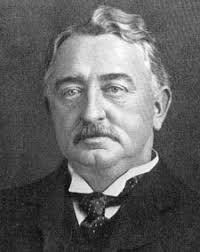 |
| Cecil Rhodes |
sporadically down through history. But Rhodes did try to set up what he called an Empire secret society intended to promote the causes of conservatism and imperialism throughout, not just the British Empire, but the world at large. And although he revised his final will – apparently - to devote the funds previously earmarked for his secret society to his more benign Rhodes Scholarships, and other good causes, there did linger suspicions that he did not totally abandon his original intention, as Milner, Lionel Curtis and bodies like the Round Table may perhaps indicate.
There seems little question that, at the very least, Rhodes's cast of mind (shared by people like Milner, Curtis, Esher, and so on) led to the formation of various bodies and organisations that had conservative, social engineering aims and intentions that took militaristic forms. On a minor level one can point to Baden Powell, and on a higher note, Roger Pocock and his Legion of Frontiersmen.
(And as we will shortly have a brief excursion into literary matters, we can mention here also Walt Whitman's Legion of Comrades, some sort of proposed secret society organised into cells of 10, which he suggested might lead to a better world.)
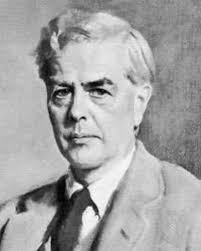 |
| Lionel Curtis |
The Legion of Frontiersmen – which still exists – was formed by Captain Roger Pocock in 1902, in the aftermath of the Boer War. It seems to have been inspired (though Rhodes might have had a finger in here somewhere) by the success of small bands of what today would be called guerrillas or "scouts" who were active in the Boer War – hence the later formation of the Selous Scouts, who were active during the Rhodesian crisis in the 1970s.
As Dr Moore points out, the Legion was "allegedly active" in organising special constables during Labor unrest in Brisbane in 1912, and surfaced later in NSW during the Lang crisis in 1930-32,
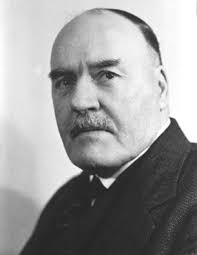 |
| Jack Lang |
proposing some sort of merger with Eric Campbell's New Guard (which was not a "secret army" – but see below). And during the General Strike in England in 1926 the Legion provided the bulk of special constables swore in to "maintain essential services" against the potential ravages of the proletarian unionists. special constables swore in to "maintain essential services" against the potential ravages of the proletarian unionists.
|
One would not claim here any more than what Dr Moore describes as a "background" to the formation in Australia of fully-fledged secret armies in the 1920s and 1930s. However, as Dr Moore also points out, there is firm evidence that there existed in Britain (and perhaps throughout the Empire) what can best be described as a contingency plan to deal with civil unrest in peace time.
Dr Moore links this "Supply and Transport" plan to Leo Amery, who was one of Lord Milner's "bright young men" in Africa and later in Britain (he subsequently became a Conservative MP and Minister). It was put into effect during the General Strike in England, and was kept "in the drawer" against future emergencies. It was communicated to Australia, possibly by R.G. Casey, later Menzies' Foreign Minister and Governor-General.
The question arises: where did this contingency plan come from? When was it formulated? Was it just something kept "in the drawer", or did it involve an ongoing organisation that persisted even when there was no "clear and present danger"? This, I believe, is the crucial secret army question.
Or, to be more accurate and germane – for I believe there is no doubt that there was some continuity in "contingency planning" (from the early 1920s the Australian Army had a secret "Internal security Plan") – what was the nature and substance of this ongoing "plan", and did it consist – rise to the level - of an actual, permanent politico-military entity?
It would be foolish or naive not to imagine that some sort of preparations against civil unrest – even proletarian or communist revolution - were not undertaken in the period of the rise of the Labor movement and Labor Party from 1890 onwards. The Army at least – both in Australia and elsewhere – would have been grossly negligent had they not at least held discussions on what role they might play if rioting, etc, broke out.
Such "discussions" would almost certainly have led to some sort of contingency planning. And this would have involved liaising with the police and politicians. This implies – indeed, requires - organisation and preparation. The plan must have been in someone's drawer. Whose?
If we had to put a date on the possible genesis of such contingency planning (which may well have risen to the level of secret army activity) then one event suggests itself. That is the Imperial Conference, held in London in 1907.
Yet another factor intrudes here, which must be mentioned. If one looks at secret army activity, particularly in Australia, one is struck with the connection between that secret activity and the nearness of the last major war. Once a nation has mobilised, or at least recruited large number of civilians into the "defence forces", then that reservoir of trained man seems to present a special, and almost irresistible, opportunity for secret army plotting.
The phrase keeps recurring…"the returned men must be kept together" (or similar sentiments). It was apparently difficult enough to recruit civilians in peace-time into secret armies. How much easier it was, then, to make use of what was at hand.
The Boer war, though it seems small beer now, following the two World Wars, was nevertheless in the early years of last century a catalytic event. It led to a reappraisal of military planning and infrastructure, and also to the idea that war in future was not something fought between standing armies, but which would involve the whole population.
The 1907 Imperial Conference, largely organised by Lord Esher, King
Edward VII's "eminence gris", was one such consequence. It was arranged partly to co-ordinate the Empire's military and strategic future. It was attended by the Australian Prime Minister Alfred Deakin and his private secretary, Herbert Brookes.
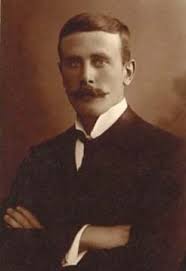 |
| Herbert Brookes |
Rohan Rivett's superficial biography of Brookes ("Australian Citizen", 1965) makes little mention of Brookes role, and we have no other evidence, but, given Brookes later secret army involvement, it is worth mentioning that if the Rhodes/Milner "secret society" conspiracy theory has any merit or substance, then this was the opportunity for Australia to be brought into an anti-civil-disruption Empire contingency plan. |
But let us put that "smoke and mirrors" speculation aside (though one does wonder, in passing, what happened to Bill Richard's files – and I would be very obliged if anyone can tell me the answer to that question, for archival purposes at least). Let us instead turn to something solid and known, and which Dr Moore correctly identifies as the start of secret army activity proper in Australia – the visit to Chicago in 1917 of the Melbourne businessman, R.C.D. Elliott.
For although logic would argue that the genesis of Australian secret army activity should be traced back to the Home Country – and perhaps the Irish-Protestant conflict in Ulster - the historical evidence is that the origin was, proximately at least, in America. The sequence of events apparently went like this:
During WW1 various local events/crises occurred in Australia (such as the Queensland Labor Government's refusal to have their police do the bidding of Nationalist PM Hughes during the conscription referenda, and the St Patrick's Day march in Melbourne when Archbishop Mannix doffed his hat to a banner commemorating the Easter Uprising in Dublin) that led to a group of people, politicians and officials to cast about for a way of combating what they saw as a "disloyal" element in the community and to provide the Federal Government with a means of combating unrest and dissent.
This group covered a broad but informal coalition of conservative, pro-Empire and mainly protestant interests. Its immediate origin may well have lain in the determination of Herbert Brookes, following the Mannix incident, to fight what he saw as inimical tendencies in Australia, and to try to marshal some sort of resistance against such tendencies (which may be broadly categorised as Labor-Irish-Radical interests/activities).
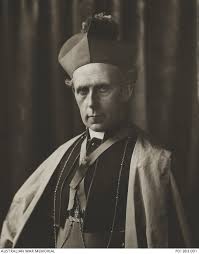 |
| Archbishop Mannix |
(It may be speculated that some more long-standing and covet secret-army thinking found an opportunity or overt entity in these events.)
One of the people who was close to such conservative interests was Sir Henry Braddon, who had recently been appointed, by the Federal Government, as Australia's representative in America, ostensibly dealing in trade matters. It now seems very probable that it was Braddon who alerted Brookes and others to a watime organisation that had been formed in America to combat (mainly German) potential disloyalty and other activity (such as IWW/labor activism), and to provide the U.S. Federal Government with an auxiliary civilian force to combat civil unrest. (The U.S. and Australian Federal Government's being in a similar position of having no Federal police role.)
The organisation was called The American Protective League (known popularly as "the Web"). (One of the vital sources in secret army research is a book by Dr Joan Jensen published in 1968 on the League called "The Price of Vigilance", in which she confirms the Australian link with the League.)
It was to the Chicago headquarters of the American Protective League that Melbourne businessman R.C.D. Elliott, was dispatched in 1917 by either Brookes or his contacts in the higher reaches of Australian Government, to follow up Braddon's probable recommendation (Braddon lauds the League in his account of his period in America) and to find out details of "the Web".
After Elliott returned, Acting Prime Minister Watt convened a high-level (and secret) meeting in Melbourne to consider his report and to form an Australian equivalent of the U.S. League. It was to be called the Australian Protective League (APL) and its guiding light was Herbert Brookes. This was to become Australia's first "proper" secret army.
And it was this nascent secret organisation (its nickname was "The Garage" – because it was organised as a mobilisation plan based on car-ownership) that a very naive Lawrence stumbled on the day after he stepped ashore in Sydney on May 27, 1922.
|